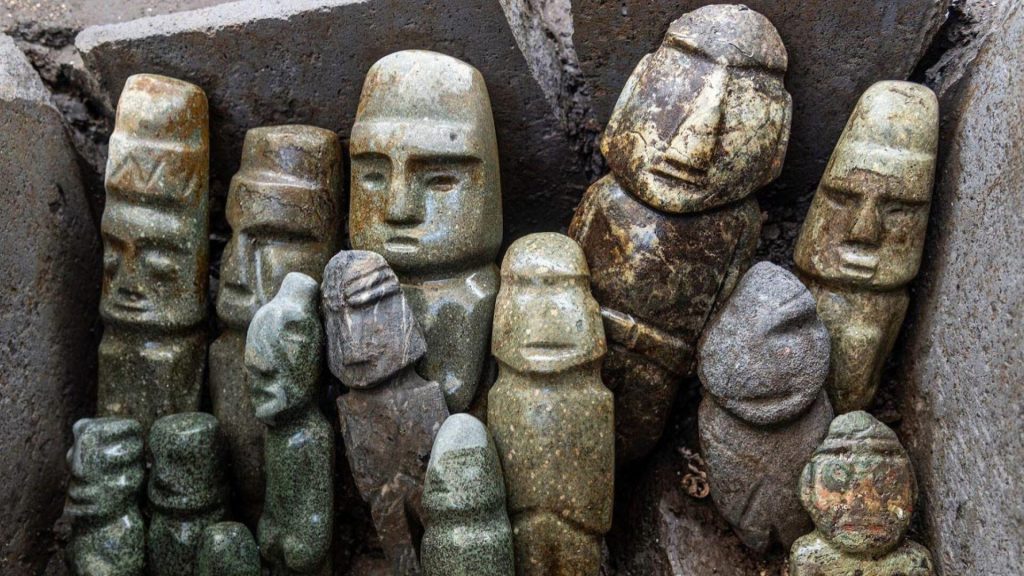In the ever-evolving field of paleontology, recent discoveries have shed new light on the mysterious and wondrous creatures that roamed our planet millions of years ago. These findings not only enhance our understanding of prehistoric life but also reveal the incredible diversity and complexity of ancient ecosystems. From giant sea predators to bizarre terrestrial giants, the latest revelations about prehistoric creatures are captivating the scientific community and the public alike.

One of the most astounding recent discoveries is the identification of a new species of ancient marine predator, Thalassotitan atrox. Unearthed in what is now Morocco, this massive creature lived approximately 66 million years ago during the Late Cretaceous period. Measuring over 30 feet in length, Thalassotitan was a formidable predator, preying on large marine reptiles and fish. Its powerful jaws and sharp teeth suggest that it occupied a top position in the marine food chain, akin to today’s great white shark. This discovery provides valuable insights into the marine ecosystems of the Cretaceous period and the evolutionary adaptations that allowed such predators to thrive.

In addition to marine giants, recent excavations in Patagonia have unveiled a new species of titanosaur, Patagotitan mayorum. This colossal dinosaur, estimated to have weighed around 70 tons and measured over 120 feet in length, lived approximately 100 million years ago. The sheer size of Patagotitan makes it one of the largest land animals ever to have existed. Its discovery has prompted scientists to reevaluate theories about the biomechanics and physiology of such massive creatures. Understanding how Patagotitan and similar species supported their enormous weight and maintained sufficient blood flow to their extremities is crucial for comprehending the limits of vertebrate size and structure.
Another intriguing discovery comes from Siberia, where well-preserved remains of a woolly mammoth calf were found in the permafrost. Named Yuka, this specimen is estimated to be around 39,000 years old and offers a unique glimpse into the life of these Ice Age giants. The exceptional preservation of Yuka’s tissues, including its fur and flesh, has allowed scientists to conduct detailed analyses of its diet, health, and even interactions with early humans. Evidence of cut marks on the bones suggests that Yuka may have been hunted or scavenged by humans, providing a rare and valuable connection between prehistoric fauna and early human activity.
In addition to these large and imposing creatures, recent discoveries have also highlighted the fascinating diversity of smaller prehistoric animals. For instance, in Myanmar, a piece of amber dating back approximately 99 million years was found to contain a tiny, well-preserved dinosaur skull. The skull, belonging to a species named Oculudentavis khaungraae, is remarkably bird-like, with features that suggest it was a small, agile predator. This discovery challenges existing notions about the evolution of birds and their relationship to dinosaurs, illustrating the complex and branching paths of evolution.
Moreover, in Madagascar, paleontologists have discovered the remains of a peculiar, herbivorous dinosaur named Adalatherium hui. This rabbit-sized creature, which lived about 66 million years ago, has a unique combination of features that puzzled scientists. Its teeth, limbs, and other anatomical traits do not fit neatly into any known category of prehistoric mammals, suggesting that Adalatherium represents a previously unknown lineage of ancient mammals. This finding underscores the vast and largely unexplored diversity of prehistoric life, highlighting the continuous need for exploration and study.
These recent discoveries about prehistoric creatures not only captivate our imagination but also significantly contribute to our understanding of life on Earth. Each new find provides a piece of the puzzle, helping scientists reconstruct the ancient world and unravel the mysteries of evolution and extinction. As technology advances and new methods of analysis become available, the future promises even more exciting revelations about the wondrous and mysterious creatures that once inhabited our planet.





